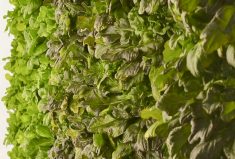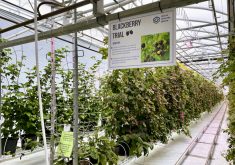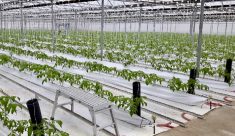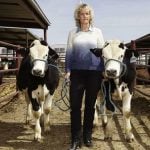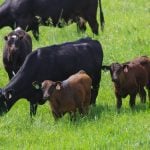Greenhouses are ripe for an explosion of sensors and artificial intelligence, but the ramifications could be many.
Participants in a panel on artificial intelligence (AI) in the greenhouse sector at the recent Arrell Food Summit discussed technical and consumer challenges that need to be considered before wide-spread adoption of the technology in the sector.
Why it matters: The greenhouse sector struggles to remain competitive with labour costs higher than other jurisdictions because of the higher minimum wage in Ontario. Advanced sensors, robotics and artificial intelligence have been touted as ways to help the sector compete.
Read Also

Conservation Authorities to be amalgamated
Ontario’s plan to amalgamate Conservation Authorities into large regional jurisdictions raises concerns that political influences will replace science-based decision-making, impacting flood management and community support.
About $500 million is invested in Ontario’s greenhouse sector, North America’s largest, every five years, said Niki Bennett, science co-ordinator with the Ontario Greenhouse Vegetable Growers. That’s the equivalent of the investment in a new auto plant. Much of that investment is aimed at keeping the Ontario sector competitive, especially in energy and labour efficiency.
Technical challenges
Greenhouse growers already make use of sensors to monitor light, temperature, soil moisture and air quality. Add in more and the volume of data could become a challenge, said Dave Gholami, a research scientist with the Vineland Research and Innovation Centre.
Imagine a sensor in a greenhouse that produces 10 kilobytes of data with every report. That’s tiny. What about 1,000 sensors per acre that report every 15 minutes every day of the year? Add in 100 more acres and that’s a lot of data, rapidly adding up to gigabytes and terabytes.
That’s the point at which no human is going to sift through that data and it makes sense for a computer program to assess the data — and then make a decision on it. That’s artificial intelligence — when a machine makes a decision that previously was made by a human.
Farmers may be able to be more labour efficient with new technology, but they will need access to new sources of labour. Who is going to run the fancy technology? Those employees will have to be higher paid than minimum wage pickers, points out Gholami.
Scaling of new technology was one concern expressed by panel members at the food summit. Gholami said the question is whether change will be incremental or very quick. Incremental change is more likely to be fed across a whole production system, versus gobbled up by a few larger players.
He also questioned if agriculture yet knows what kinds of sensors it really needs and if they are available. The auto sector was founded because of industrialization and so the addition of sensors was a natural evolution. Agriculture traces back to before industrialization.
Blockchain and consumer choice
The agriculture and food sector has been stuck in silos, said Dan Branson of Loblaw Companies. Wholesalers don’t often know what happens to their product when it hits a distribution centre for a large retailer. Retailers don’t know what goes on at the farm. What he calls a “brave new world of transparency and data” can change that, with implications for labour and even what it means to be ‘local’.
Blockchain, the ability to inexpensively assure the security of transactions and information through the use of mirroring of the information on multiple sites, can also have an effect. With greater transparency, what will consumers demand, or what will it make sense for greenhouse growers to deliver?
Will the ability to know what consumers desire limit the variety of produce available?
Not likely, says Bennett, as the types of tomatoes grown in greenhouses is rapidly diversifying. Have a look at the supermarket tomato section, with packs of many colours of grape tomatoes and the new blueberry-sized tomatoes.
Paul Uys, director of external affairs at the Arrell Food Institute and one of the session organizers, asked if blockchain and the ability to manage more parameters of production could lead to a type of “free from” label for greenhouse vegetables. Maple Leaf Foods has produced a successful line of meat from animals not treated with antibiotics or supplemental hormones. Other companies have followed. Bennett pointed out that free from pesticides is much tougher than organic certification, as there are organic pesticides used by greenhouses which would be difficult to replace. Greenhouses would be the place it would be possible, said Branson, because of the controlled environment.
“If you ask the organic consumer what they want, they want it grown without pesticides,” he said.
Technology changes could mean more ability to supply local produce, said Branson, such as local strawberries grown in greenhouses. He warned that some of Ontario’s greenhouses are getting older and are less efficient and that’s a challenge for the sector going forward.
There’s little doubt that more technology is moving into greenhouses. The implications for labour and consumer choice will be significant.





